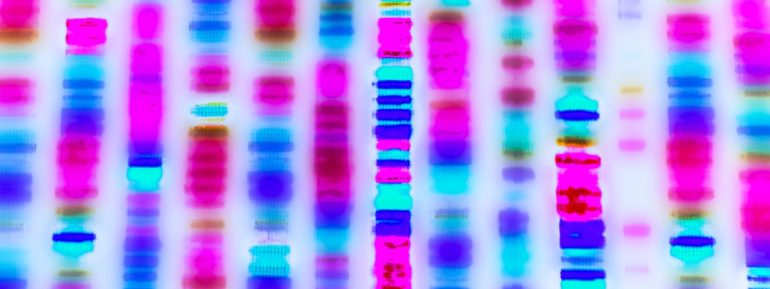Scientists at EPFL have made breakthrough discoveries on the circadian clock and how it affects gene expression. Some of the findings suggest a biological underpinning for different behaviors in people, such as morning people, nappers, evening people, night owls etc.
In 2017, the Nobel Prize in Physiology or Medicine went to three scientists who uncovered the molecular mechanisms that control the circadian rhythm, otherwise known as the “wake-sleep” cycle. To carry out their work, the scientists used the common fruit fly Drosophila melanogaster, making this the sixth Nobel to be awarded to research involving it.
Fruitful fruit flies
Life scientists have been using Drosophila for over a century now. First proposed by entomologist Charles W. Woodworth as a model organism, its use in research was pioneered by geneticist Thomas H. Morgan who ran his famous Fly Room at Columbia University in the early 1900’s.
Sharing around 60% of human DNA, the humble insect has been the linchpin of countless scientific discoveries, from genetic inheritance and gene mutation to neurodegenerative disorders like Alzheimer’s and Parkinson’s.
Circadian rhythms
Drosophila has also been used extensively in the study of the circadian rhythm, a process shared by virtually all living organisms, including animals, plants, and even microbes. Apart from sleeping and waking, it affects multiple aspects of our bodies, including hormone release, eating and digestion, as well as body temperature.
In fact, the study of circadian rhythms has grown into its own field: chronobiology. And given that a person’s circadian rhythm seems to dictate when certain drugs must be taken in order to maximize their effects, a new branch of medicine has also emerged recently: chronopharmacology.
Gene rhythms
Now, scientists led by Maria Litovchenko and Bart Deplancke at EPFL’s School of Life Sciences have carried out an extensive study using Drosophila to study how different genes in various tissues of the animal are regulated so that they “know” when to turn on and off during the course of a day, i.e. in function of the circadian clock. “We wanted to assess how these molecular rhythms vary in a natural fruit fly population and how they are affected by genomic variation,” adds Deplancke. The study is published in Science Advances.
The scientists turned to a fly resource called the Drosophila Genetic Reference Panel (DGRP), which contains more than 200 genetically distinct lines of the insect. Each line’s genome has been fully sequenced so that scientists can spot differences between genotypes and then connect them to differences between phenotypes, thereby linking genes to their functions.
From the DGRP, the scientists sampled more than 700 tissue-specific “transcriptomes.” In an organism or a tissue or just a cell, genes are decoded or “transcribed” into mRNA, which is then used to put together a protein. So a transcriptome is essentially a set of all RNA transcripts from an organism’s DNA, coding or non-coding.
In this study, the scientists used the mRNA from a reference, “control,” fly strain and then sampled the mRNA from 141 individual DGRP lines at high resolution—at about nine-minute intervals between each line. The idea behind this was to see how the gene transcripts changed over time in different lines, and get a handle on how the fruit fly’s genetic background and circadian rhythm together affect the expression of different genes in distinct tissues.
“It allowed us to generate the first tissue-specific reference circadian gene expression time series in Drosophila; a comprehensive circadian gene-expression atlas,” says Litovchenko. “But it also let us gain unprecedented insights into the extent and genome-wide nature of circadian gene expression variation using an innovative approach that allowed the reconstruction of dynamic cycling patterns from statically collected samples.”
The study revealed three major points about the circadian rhythm.
The Clock reigns supreme
First, the scientists detected more than 1700 genes whose expression cycles under the control of the circadian clock, with only fourteen of those genes being the same across all tissues in the fruit fly.
“At least two of these fourteen were so far uncharacterized and significantly impact several locomotor activity rhythms parameters,” says Litovchenko, referring to the fruit fly’s behavioral patterns that depend on its circadian clock. “Since these genes have orthologs (similar genes) in mice, baboons, and humans, our findings strongly suggest that they are novel, core clock-regulators in mammals as well,” she adds.
Morning person or night owl?
Second, that each individual may have its own circadian rhythm, which may explain the large range of human behaviors, such as morning people, nappers, evening people, night owls etc. The researchers used a state-of-the-art statistical approach to work out the natural circadian rhythm for every tissue in every DGRP fruit fly transcriptome.
What they found was that the physiological clock in about a third of Drosophila lines significantly deviates from the “natural” time by more than three hours. And most of the lines showed a circadian expression variation only in one or two tissues.
“Humans may also be impacted by such extensive variation,” says Deplancke. “There seems to be an abundant, natural circadian asynchrony in molecular circadian rhythms between various tissues, which has to our knowledge not been observed before and which may have all kinds of physiological consequences in metabolic patterns, digestive fluctuations etc.”
Light, dark, and a mutation
Finally, that a small genetic mutation can disrupt an individual’s “photoentrainment,” which refers to the aligning of the circadian rhythm to the pattern of light and dark in its environment.
Focusing on a Drosophila line with the highest unaligned circadian rhythm (more than 10 hours), the researchers found that it contains a novel, loss-of-function deletion in the Drosophila clock- and light-regulated gene “cry” (for “cryptochrome”).
“This small deletion disrupts the light-driven FAD cofactor photoreduction,” says Deplancke. “It confirms in vivo the importance of the evolutionary conserved photo-entrainment mechanism in the circadian pacemaker.”
From fly to human
The study also reconfirmed that Drosophila is an excellent model for studying the circadian rhythm in humans, as it identified several new core clock genes that the two species share. “We have gained unique insights as to what extent the circadian clock is molecularly variable not only between individuals, but even between tissues of the same individual,” says Deplancke.
“Obviously, we will never be able to achieve such insights in humans, as we cannot sample human tissues across 24 hours,” he adds. “But what we learned is that this variation is very extensive. Given the increasing importance of chronopharmacology, it may be good to infer the innate circadian cycle of individuals before starting important drug treatments.”
The study is published in Science Advances.
New study on circadian clock shows ‘junk DNA’ plays a key role in regulating rhythms
More information:
“Extensive tissue-specific expression variation and novel regulators underlying circadian behavior” Science Advances, advances.sciencemag.org/lookup … .1126/sciadv.abc3781
Provided by
Ecole Polytechnique Federale de Lausanne
Citation:
Genes that dance to the circadian rhythm (2021, January 29)
retrieved 30 January 2021
from https://phys.org/news/2021-01-genes-circadian-rhythm.html
This document is subject to copyright. Apart from any fair dealing for the purpose of private study or research, no
part may be reproduced without the written permission. The content is provided for information purposes only.



